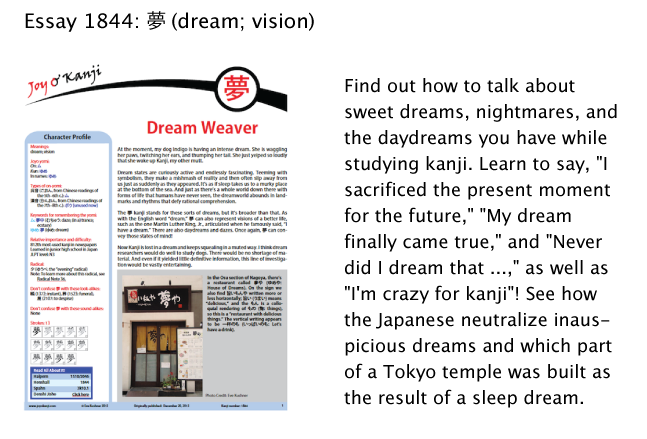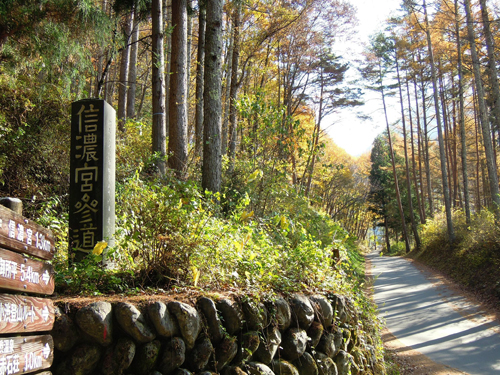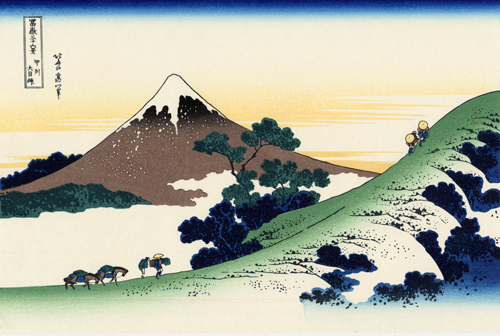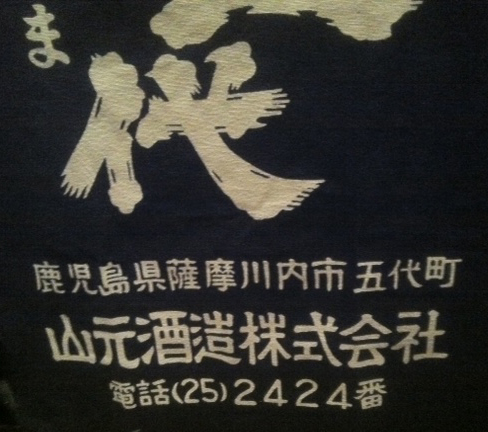The Past in the Present
Let's start with a quiz. What do you think the following term could mean?
浪速 waves + fast
a. tsunami
b. growing sense of connection between people
c. old name for Osaka region
d. old name for Okinawa
I'll block the answer with a preview of today's new publication, which is essay 1844 on 夢 (dream; vision):

Ready for the answer?
c. 浪速 (なにわ: waves + fast) is an old name for the Osaka region. People have also written this name as 難波 and 浪花, but 浪速 appears in the following poem by 豊臣秀吉 (とよとみ ひでよし, 1537–1598), a famous warlord who came to rule most of Japan and who wrote these lines as he was about to die:
露と落ち露と消えにし我が身かな浪速のことは夢のまた夢
My life / came like dew / disappears like dew. /
All of Naniwa / is like a dream within a dream.
露* (つゆ: dew); 落ちる (おちる: to fall);
消える (きえる: to fade away); 我が身 (わがみ: me);
夢のまた夢 (ゆめのまたゆめ: dream within a dream)
For some reason, this poem has suddenly roosted in my brain. Maybe it's that the year is about to disappear like dew after speeding by like a fast wave and now seems almost like a dream (or a dream within a dream). The more I think about this poem, the more beautiful it seems. The lovely words "dew," "disappear," "dream" (three Ds!) correspond to these gorgeous shapes: 露, 消, and 夢. Such sensuality, and to think that all this came from a warlord!
This poem also presents a matter of which I've just become aware. The Japanese appear to have a great nostalgia for Edo-era province names. The current prefecture system was introduced in the beginning of the Meiji Era, so even though the old names became obsolete long ago, they're still very much alive in other senses. They commonly serve as the names of mountain passes, roads, shops, and companies. They're also parts of brand names, particularly of souvenirs.
Here are some examples (and they include so many non-Joyo kanji that I won't bother to point out each one):
On Honshu
越後 (えちご: present-day Niigata Prefecture)
信濃 (しなの: present-day Nagano Prefecture)
武蔵 (むさし: present-day Saitama Prefecture, plus a rural part of what is now Tokyo)
上総 (かずさ), 下総 (しもふさ), and 安房 (あわ), which have combined to form Chiba Prefecture
相模 (さがみ: present-day Kanagawa Prefecture)
伊豆 (いず) and 駿河 (するが), which have combined to form Shizuoka Prefecture
The name 伊豆 endures in the name 伊豆半島 (いずはんとう), the peninsula on which Shizuoka Prefecture lies.
遠江 (とおとうみ: present-day Hamamatsu Prefecture)
但馬 (たじま: present-day northern Hyogo Prefecture)
This term still exists in 但馬牛 (たじまぎゅう: Tajima beef). After I spent a full day working on essay 1559 on 但 (provided that; however, but; only), I was thrilled to go to a Japanese steakhouse in San Francisco and to spot Tajima beef on the menu!
丹波 (たんば: what is now central Kyoto Prefecture and central and eastern Hyogo Prefecture)
播磨 (はりま: what is now southwest Hyogo Prefecture)
摂津 (せっつ: areas around the present-day Kobe)
紀伊 (きい: present-day Wakayama Prefecture)
On Shikoku
土佐 (とさ: present-day Kochi Prefecture)
On Kyushu
薩摩 (さつま: present-day Kagoshima Prefecture)

Photo Credit: Yoshikazu Kunugi
A sign in Oshikamura Village in Nagano Prefecture bears the name of a Shinto shrine: 信濃宮 (しなのみや). This shrine contains the name of the province that was once there (信濃, しなの). After that we find 參道 (さんどう: approach to the shrine).

This woodblock print by Katsushika Hokusai (1760–1849) is titled 「甲州犬目峠 (こうしゅういぬめとうげ: Inume Pass, Koshu)」. The first word, 甲州 (こうしゅう), is the name of the province now known as Yamanashi Prefecture. The next part of the title, 犬目峠, means “Dog’s Eyes Pass”! This work from 1830 is part of the series called Thirty-Six Views of Mount Fuji.
I realize now that I've written about several of these names, as in essay 1650 on 陶 (pottery; training; contented, entranced), where I discuss a style of pottery known as 丹波焼 (たんばやき). Named for 丹波, this is one of six famous medieval pottery styles in Japan.
I again mention 丹波 in essay 1559 on on 但 (provided that; however, but; only) because a Hyogo Prefecture company in Tamba City produces a brand of milk called 丹但牛乳 (たんたんぎゅうにゅう).
Furthermore, in essay 1559 I share the legend that the rich governor of Satsuma Province, 薩摩守忠度 (さつま のかみ ただのり, 1144–1184), was a fare evader! Supposedly, he once took a ferry without paying. That wouldn’t make for much of a story except that the man’s given name, 忠度 (ただのり), sounds exactly like 只乗り (ただのり: free riding). In fact, this is such a coincidence that some doubt that the fare evasion ever happened. The Japanese have long used the term 薩摩守 (さつまのかみ) for the act of not paying for a ride on a ferry, a train, or even a woman (essentially “anything you can ride,” says my proofreader!). More broadly, 薩摩守 means “not paying for a service.” Anyway, as you know, 薩摩 (さつま) is the old name of what is now Kagoshima Prefecture.

Photo Credit: Eve Kushner
What a huge surprise to spot 紀伊 (きい: present-day Wakayama Prefecture) in the name of a bookstore that I've gone to for years! The yomi of this store is as follows:
紀伊國屋 (きのくにや: store of the old Kii Province)
書店 (しょてん: bookstore)
There are a few things to explore here. First, the man who founded this store in 1927 was actually from Tokyo, but his ancestors came from 紀伊國, also known as 紀州 (きしゅう), so he named the store after his ancestral homeland.
Second, there's the issue of why the 紀伊 in the name doesn't have the yomi of きい. Back in the seventh century, the province was originally called 木國 (きのくに). At that point, the yomi matched the kanji (though the の was implied). Then in 713, the name changed to 紀伊國. According to Wikipedia, that would have constituted ateji if people pronounced this as きのくに. However, it isn't known exactly how people pronounced things back then, and they may have initially treated the 伊 as a silent character, only later coming to read it as い.
Finally, you may be wondering about the 國 (くに: country), which is the variant of the Joyo 国. The provinces were actually considered "countries." In essay 1663 on 峠 (mountain pass, highest point on a mountain road; peak (of a crisis, trend, etc.)), I discuss a mountain pass called 十国峠 (じっこくとうげ or じゅっこくとうげ: “10 Countries Pass”), a name that refers to the 10 “countries” visible from that pass.

Photo Credit: Eve Kushner
On a decorative cloth hanging in a Japanese restaurant in Berkeley, there’s a reference to the current name of Kagoshima Prefecture:
鹿児島県 (かごしまけん)
After that comes the name of a city in that prefecture:
薩摩川内市 (さつませんだいし)
As you know, 薩摩 (さつま) is also the name of the province that preceded Kagoshima. How about that?!
The rest of the kanji give us the name of the town (五代町, ごだいちょう), the name of a shochu brewery (山元, やまもと: family name), 酒造 (しゅぞう: alcohol brewing), and 株式会社 (かぶしきがいしゃ: corporation). The bottom line tells us the telephone (電話, でんわ) number (番, ばん).
Just as the Japanese love Edo-era province names, there's also a great deal of affection for the name Edo (江戸, えど) itself. How many photos have I taken of contemporary businesses with that old term in their names? Even here in Berkeley there is a restaurant called 江戸っ子 (えどっこ: person from Edo; literally, "child of Edo"). It seems that I could learn nearly everything about Japan simply by dining out in Berkeley!
How gratifying it is for me to tie all these threads together and to grasp for the first time how much these ancient names thread themselves through Japanese culture—and therefore through my Joy o' Kanji writing. Tracing the threads seems like the perfect way to wrap up a year that will soon vanish like so much dew.
Joy o' Kanji is on vacation for nearly three weeks. Happy holidays and Happy New Year to all of you!

Comments